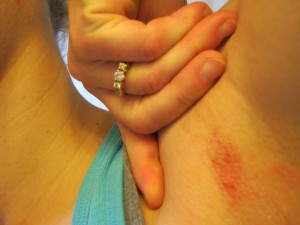
What to do after antibiotics?Īlso, antibiotics disturb the balance between the good bacteria of the intestinal flora and the aggressive yeast. You get that by choosing consistently for a healthy diet. A leaking bowel gradually recovers as bowel bacteria come back into balance. Because the intestines absorb nutrients less well and the immune system is compromised, your health deteriorates. For example, a leaking bowel may be the beginning of all kinds of health problems. The affected intestinal wall can absorb nutrients less well, resulting in deficiencies in the body. The immune system sees these food particles as toxic and responds to all kinds of inflammatory reactions, such as joint pain, fatigue, headache and asthma symptoms. This phenomenon is called a ‘leaking bowel’. Yeasts and aggressive bacteria cause minor damage to the intestinal flakes or villi, so particles from the food mass enter the bloodstream, giving them a toxic effect.

When there is too much Candida in the intestine, it touches the intestinal wall.
SIGNS OF YEAST OVERGROWTH SKIN
This Candida albicans lives in small amounts in our mouths, intestines, on our skin and in the vagina. A common type of yeast is the Candida albicans that in our body are a normal part of the mixture of yeasts and bacteria that do their work in that body.

The good bacteria of our intestinal flora, if balanced, live in balance with the natural yeast in our body.
SIGNS OF YEAST OVERGROWTH HOW TO
Here you will find out how to recognize this fungal infection, what the causes are and what you can do to alleviate the complaints. This is caused by the yeast Candida albicans, which is naturally present in our body but can cause wild growth of fungi if it gets a chance. One of the most common fungal infections is Candida. For example, this is due to our modern lifestyle and an unhealthy diet. Millions of people around the world today suffer from fungal infections. The occurrence of this imbalance can have several causes.


 0 kommentar(er)
0 kommentar(er)
